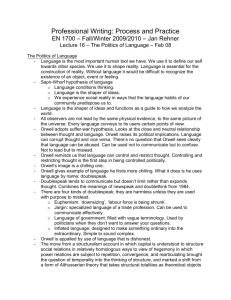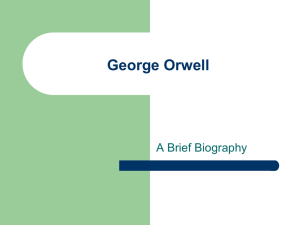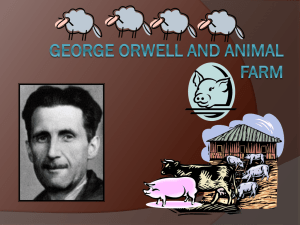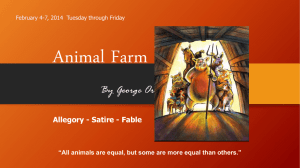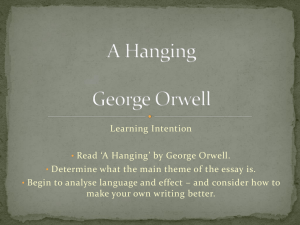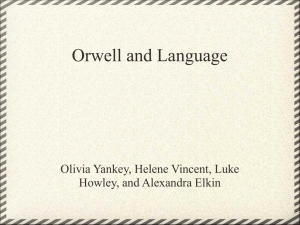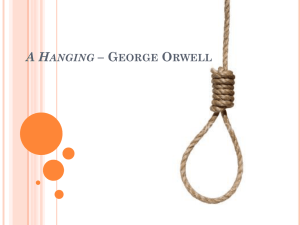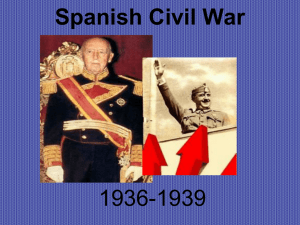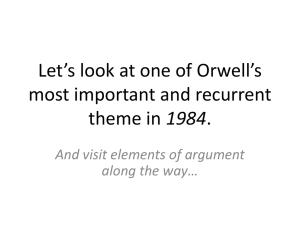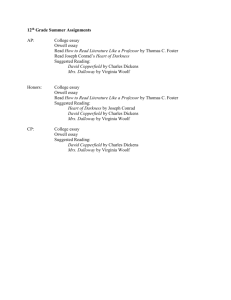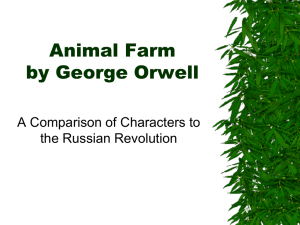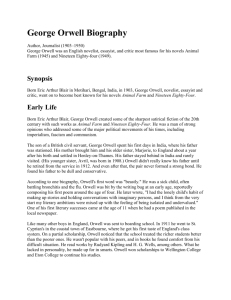Sample essay A Hanging
advertisement
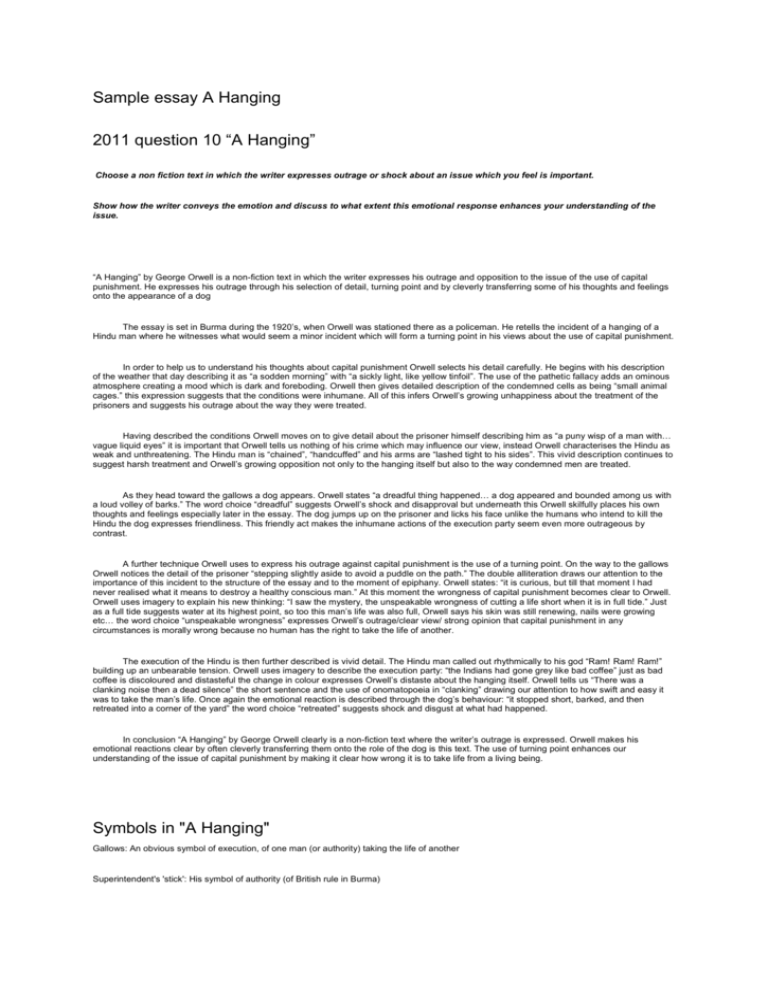
Sample essay A Hanging 2011 question 10 “A Hanging” Choose a non fiction text in which the writer expresses outrage or shock about an issue which you feel is important. Show how the writer conveys the emotion and discuss to what extent this emotional response enhances your understanding of the issue. “A Hanging” by George Orwell is a non-fiction text in which the writer expresses his outrage and opposition to the issue of the use of capital punishment. He expresses his outrage through his selection of detail, turning point and by cleverly transferring some of his thoughts and feelings onto the appearance of a dog The essay is set in Burma during the 1920’s, when Orwell was stationed there as a policeman. He retells the incident of a hanging of a Hindu man where he witnesses what would seem a minor incident which will form a turning point in his views about the use of capital punishment. In order to help us to understand his thoughts about capital punishment Orwell selects his detail carefully. He begins with his description of the weather that day describing it as “a sodden morning” with “a sickly light, like yellow tinfoil”. The use of the pathetic fallacy adds an ominous atmosphere creating a mood which is dark and foreboding. Orwell then gives detailed description of the condemned cells as being “small animal cages.” this expression suggests that the conditions were inhumane. All of this infers Orwell’s growing unhappiness about the treatment of the prisoners and suggests his outrage about the way they were treated. Having described the conditions Orwell moves on to give detail about the prisoner himself describing him as “a puny wisp of a man with… vague liquid eyes” it is important that Orwell tells us nothing of his crime which may influence our view, instead Orwell characterises the Hindu as weak and unthreatening. The Hindu man is “chained”, “handcuffed” and his arms are “lashed tight to his sides”. This vivid description continues to suggest harsh treatment and Orwell’s growing opposition not only to the hanging itself but also to the way condemned men are treated. As they head toward the gallows a dog appears. Orwell states “a dreadful thing happened… a dog appeared and bounded among us with a loud volley of barks.” The word choice “dreadful” suggests Orwell’s shock and disapproval but underneath this Orwell skilfully places his own thoughts and feelings especially later in the essay. The dog jumps up on the prisoner and licks his face unlike the humans who intend to kill the Hindu the dog expresses friendliness. This friendly act makes the inhumane actions of the execution party seem even more outrageous by contrast. A further technique Orwell uses to express his outrage against capital punishment is the use of a turning point. On the way to the gallows Orwell notices the detail of the prisoner “stepping slightly aside to avoid a puddle on the path.” The double alliteration draws our attention to the importance of this incident to the structure of the essay and to the moment of epiphany. Orwell states: “it is curious, but till that moment I had never realised what it means to destroy a healthy conscious man.” At this moment the wrongness of capital punishment becomes clear to Orwell. Orwell uses imagery to explain his new thinking: “I saw the mystery, the unspeakable wrongness of cutting a life short when it is in full tide.” Just as a full tide suggests water at its highest point, so too this man’s life was also full, Orwell says his skin was still renewing, nails were growing etc… the word choice “unspeakable wrongness” expresses Orwell’s outrage/clear view/ strong opinion that capital punishment in any circumstances is morally wrong because no human has the right to take the life of another. The execution of the Hindu is then further described is vivid detail. The Hindu man called out rhythmically to his god “Ram! Ram! Ram!” building up an unbearable tension. Orwell uses imagery to describe the execution party: “the Indians had gone grey like bad coffee” just as bad coffee is discoloured and distasteful the change in colour expresses Orwell’s distaste about the hanging itself. Orwell tells us “There was a clanking noise then a dead silence” the short sentence and the use of onomatopoeia in “clanking” drawing our attention to how swift and easy it was to take the man’s life. Once again the emotional reaction is described through the dog’s behaviour: “it stopped short, barked, and then retreated into a corner of the yard” the word choice “retreated” suggests shock and disgust at what had happened. In conclusion “A Hanging” by George Orwell clearly is a non-fiction text where the writer’s outrage is expressed. Orwell makes his emotional reactions clear by often cleverly transferring them onto the role of the dog is this text. The use of turning point enhances our understanding of the issue of capital punishment by making it clear how wrong it is to take life from a living being. Symbols in "A Hanging" Gallows: An obvious symbol of execution, of one man (or authority) taking the life of another Superintendent's 'stick': His symbol of authority (of British rule in Burma) "March": the warders march side by side with the prisoner, symbolic of all being on the same journey together towards death. There is a fixed outcome for all of us. "Water": symbolic of life, "puddle" "... a life short ... in full tide" "Dog": symbolises (embodies) emotional responses to the hanging - full of friendliness, life, love towards the condemned man, shocked and timorous after the execution
